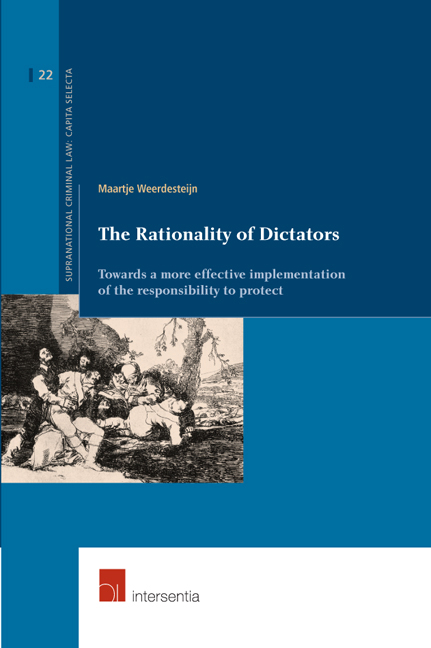 The Rationality of Dictators
The Rationality of Dictators from Part II - The Comparative Case Study
Published online by Cambridge University Press: 28 September 2018
INTRODUCTION
After Pol Pot rose to power in 1975, his regime inflicted unimaginable horrors on the population in an attempt to transform society in accordance with his communist ideology. Before he was removed from power four years later, his regime had starved, executed and worked to death up to a quarter of the population (Chandler, 1999, p. 4; Kiernan, 2003, p. 587). Throughout its history, Cambodia's fate has been intertwined with that of its neighbours. When the war in Vietnam started in 1960 this had far reaching consequences for Cambodia as well (Becker, 1998, p. xv; 1). Both sides in the war, the communist as well as South Vietnamese and US forces, used Cambodian territory as their battleground (Kiernan, 2002, p. 485). The United States decided to heavily bomb the Cambodian countryside from 1969 to 1973 to target communist sanctuaries, with devastating effects on those living there (Becker, 1998, pp. 16-17; Kiernan, 2002, p. 485; Short, 2004, p. 182; 215). Pol Pot rose to power amidst this chaos, determined to free his country from foreign influence (Becker, 1998, p. 16; K. D. Jackson, 1989, p. 41). Cambodia was frequently seen by its political leaders ‘as one of history's great victims’ (Becker, 1998, p. xv). After an era of greatness between the 9th and the 15th centuries, Cambodia's territory by the time the Khmer Rouge came to power spanned only a fraction of what it once was and the Khmer Rouge sought to restore the country's former glory (Chandler, 1998, pp. 12-14). Pot changed the name to the country to Democratic Kampuchea, favouring its indigenous pronunciation over the westernised ‘Cambodia’ (Pina e Cunha, Rego, & Clegg, 2011, p. 272).
While Cambodia has always had the reputation of being a gentle and kind nation, like so many other countries, it has a violent history in which despotic rulers provoked and fought unending wars. When one takes this into consideration the horrors of the Khmer Rouge are hardly an aberration in its history (Becker, 1998, p. xv; A. Jones, 2011, p. 283; Vickery, 1984, pp. 7-9). Its past continued to be important for its population and, as will be explained below, the history and corresponding animosities between different groups in the country shaped Pol's genocidal policies.
To save this book to your Kindle, first ensure [email protected] is added to your Approved Personal Document E-mail List under your Personal Document Settings on the Manage Your Content and Devices page of your Amazon account. Then enter the ‘name’ part of your Kindle email address below. Find out more about saving to your Kindle.
Note you can select to save to either the @free.kindle.com or @kindle.com variations. ‘@free.kindle.com’ emails are free but can only be saved to your device when it is connected to wi-fi. ‘@kindle.com’ emails can be delivered even when you are not connected to wi-fi, but note that service fees apply.
Find out more about the Kindle Personal Document Service.
To save content items to your account, please confirm that you agree to abide by our usage policies. If this is the first time you use this feature, you will be asked to authorise Cambridge Core to connect with your account. Find out more about saving content to Dropbox.
To save content items to your account, please confirm that you agree to abide by our usage policies. If this is the first time you use this feature, you will be asked to authorise Cambridge Core to connect with your account. Find out more about saving content to Google Drive.